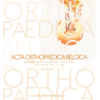Postfusion effect on pullout strength of pedicle screws with expandablepeek shell and conventional screws
Pedicle screw; postfusion; polyurethane foam; pullout test; augmentation
Published online: Jan 20 2023
Abstract
The pullout performance of various pedicle screws after artificial fusion process was investigated in this study. Normal, cannulated (cemented), novel expandable and normal (cemented) pedicle screws were tested. Polyurethane foams (Grade 10 and Grade 40) produced by casting method were used as test materials. The instrumentation of pedicle screws has been carried out with production of foams, simultaneously. For cemented pedicle screws, 3D models were prepared with respect to the anteriosuperior and oblique radiographs by using PMMA before casting procedure. Pullout tests were performed in an Instron 3369 testing device. Load versus displacement graph was recorded and the ultimate force was defined as the pullout strength sustained before failure of screw. As expected, the pullout strengths of pedicle screws in postfusion are higher than before fusion. Pullout strengths increased significantly by artificial fusion in Grade 10 foams compared to Grade 40 foams. Additionally, while the pullout strengths of normal, cannulated and novel expandable pedicle screws increased by artificial fusion, cemented normal pedicle screws had lower pullout values than before fusion in Grade 40 foams. When the cemented normal pedicle screws are excluded, other screws have almost similar pullout strength level. On the other hand, the pedicle screws have different increasing behaviour also, there is no correlation between each other. As a result, the novel expandable pedicle screws can be used instead of normal and cannulated ones due to their performances in non-cemented usage.
